Winston Churchill surveys the ancient, high-ceilinged grandeur of the hall and doesn’t look too impressed. But that’s okay, because the wartime PM is a bronze statue, and it’s not his job to stand in slack-jawed wonder at his surroundings – it’s mine.
I’m in the mediaeval marvel that is the Guildhall’s Great Hall in London. This awe-inspiring space, decorated with huge stained-glass windows, has hosted the Lord Mayor’s banquets since 1502, and much more besides! It even managed to survive the Great Fire of London, but after making it through parties hosted by the likes of Boris Johnson, perhaps that’s not surprising. As well as Churchill, it also features statues of notables like William Pitt, and towering effigies of those mythical mascots of London, Gog and Magog.
Amid this formidable company, I was very pleased to be interviewing two other near-mythical Guildhall natives, Terence Short and Paul Roberts from the City of London Corporation (CoLC). This organisation is even older than the Guildhall, dating back to the 11th century, and is “the municipal governing body of the City of London, the historic centre of London and the location of much of the United Kingdom’s financial sector.”
For Fireco I was project-managing three films to showcase our successful partnership with a body that governs an area containing over 7000 residents, but more than half a million workers. For Terence and Paul, Principal Fire Safety Advisor and Guildhall Health and Safety Manager respectively, the issue of fire safety for the CoLC’s workers and historic buildings is of utmost importance.
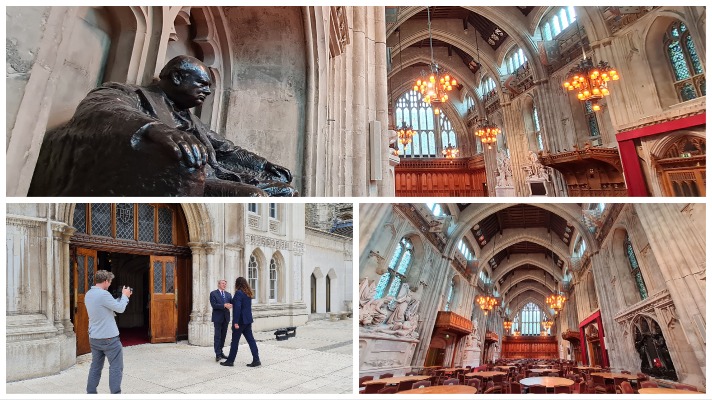
The interior of the Guildhall’s Great Hall and exterior filming
Dealing with large corporations can be detailed and time-consuming. What I was requesting was two days of filming in locations that utilise our products with a 2 man film crew and CoLC personnel. Paul and Terence are used to the likes of Tom Cruise phoning up to arrange a nighttime shoot involving helicopters and street shutdowns, so they were more than accommodating. Whilst we don’t have the likes of Mr Cruise to open doors for us, we do have my colleague James Cox, who knows about fire door safety, and is a breathing encyclopaedia when it comes to historic London.
After all the organising, which included creating a filming timetable to share with our filmmakers, Brighton Video Production, I was excited to finally be able to travel to London to begin. Working for Fireco, one of the things I enjoy most is the sheer breadth and diversity of our client base. Dealing in fire safety solutions, it’s only natural that we encounter a wide range of buildings of all sizes and ages. There’s a real buzz walking through the doors of these assorted locations for the first time, never knowing who or what might be on the other side.
Filmmaking commenced on a somewhat overcast day in May – so we made the decision to concentrate on interiors, beginning in the Great Hall. Here, Terence explained the sheer variety of services that the CoLC is responsible for and the challenges they face when it comes to fire safety. He then took us downstairs to show us the atmospheric East and West Crypts that date back to 1042. This space is much more spartan than the Hall above, but still impressive, with its ornate, vaulted ceiling supported by marble pillars. Like the hall above it, the Crypts are available to hire for functions. Even Queen Victoria attended a banquet there in July 1851.
Paul then told us how our Digital Messaging Service (DMS) has played a pivotal role in ensuring the safety of up to 2000 employees within the Guildhall complex, which encompasses the police HQ, the art gallery, event space and the general office area. You can see Paul describing the benefits of DMS in our case study video.
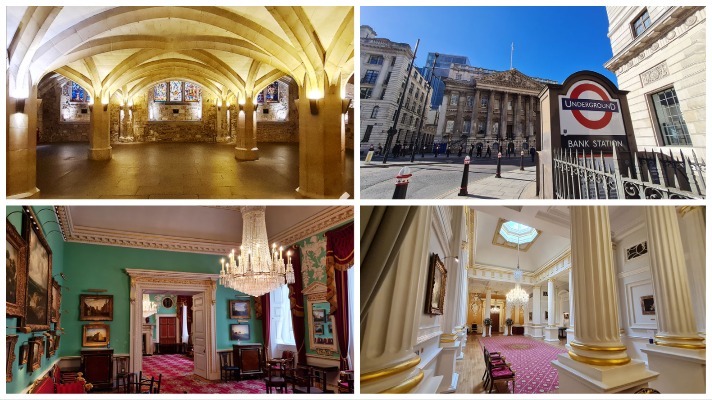
The West Crypt under Guild Hall and three views of Mansion House.
From here, we relocated to Mansion House, the home of the Mayor of the City of London, which is only a 5-minute walk away. Built in the 1740s, it’s a grand building with large Corinthian columns, wide spaces for dining and rooms adorned with priceless artwork, sculptures and ornaments. It has drawing rooms, a salon, the Egyptian Hall (which seats about 350 people and is actually more Roman in design) and The Old Ballroom, also used for functions. Before this, mayors used either their own private residences or livery halls to carry out their functions of office.
For banquets, Mansion House originally shared its chandeliers with the Guildhall, and they were moved back and forth at great risk. In the late 1700s, as they were bringing the chandeliers back from Guildhall, the unavoidable happened and a number of chandeliers were broken. When it was all swept up, the Court of Aldermen (which still exists and represents each of the City’s 25 wards) allowed Mansion House to obtain its own lights.
We felt very privileged to be allowed into the basement of MH for a quick tour of the many priceless gifts that have been given to the State by visiting dignitaries from abroad. Filming and touching the items was strictly prohibited and who were we to argue, with large sabres and daggers featuring prominently amongst the many artefacts. However, these items aren’t destined to remain on shelves unseen, as they’re sometimes brought upstairs to be admired by attendees of functions.
After this visit, we headed back to the Guildhall Art Gallery, adjacent to the Grand Hall, where we discovered a site even older than those we’d already visited…
See the finished film, where Terence Short introduces the City of London Corporation and reveals how Fireco have helped with compliance issues in its historic buildings.
Join me for part two of this blog where we visit other fascinating locations that Fireco have helped in the City of London!

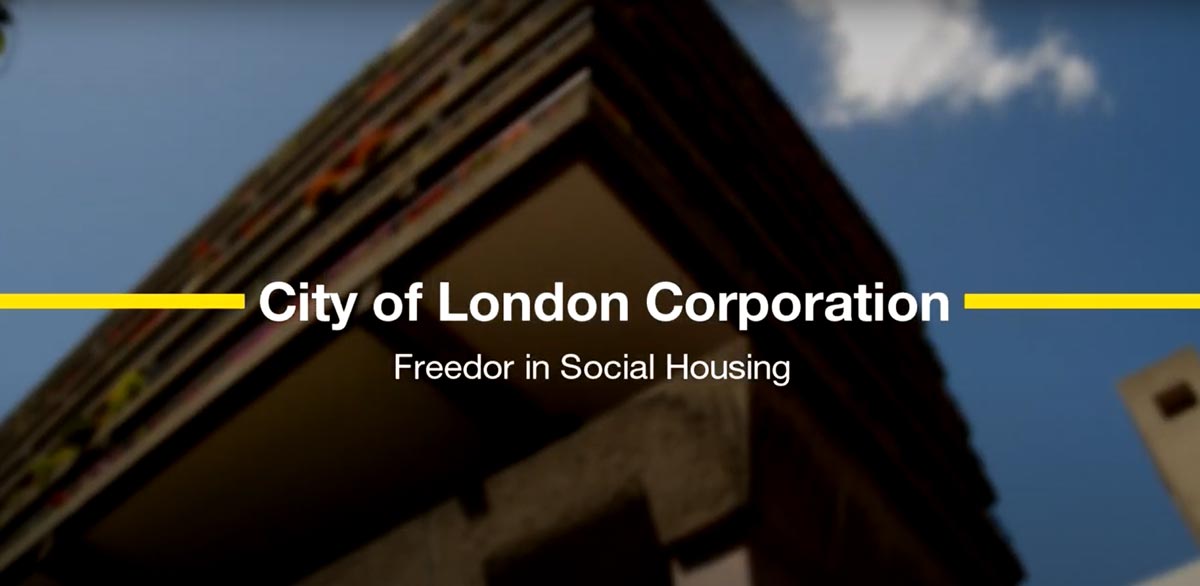
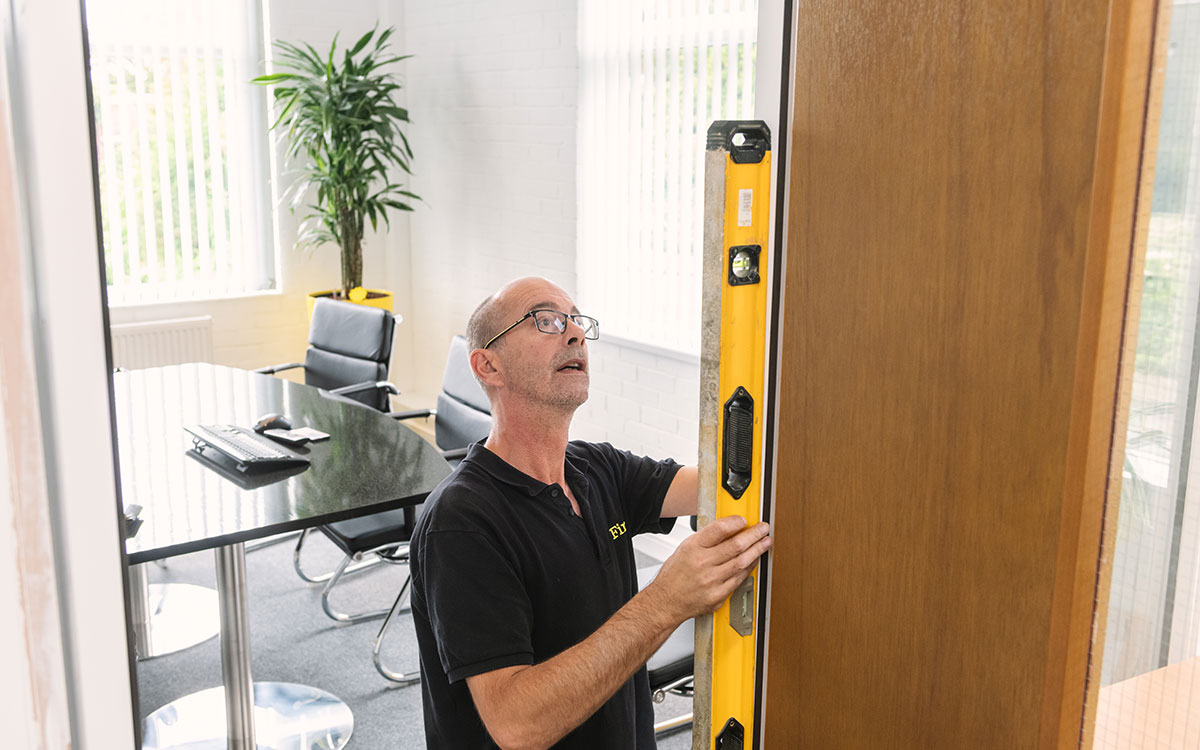
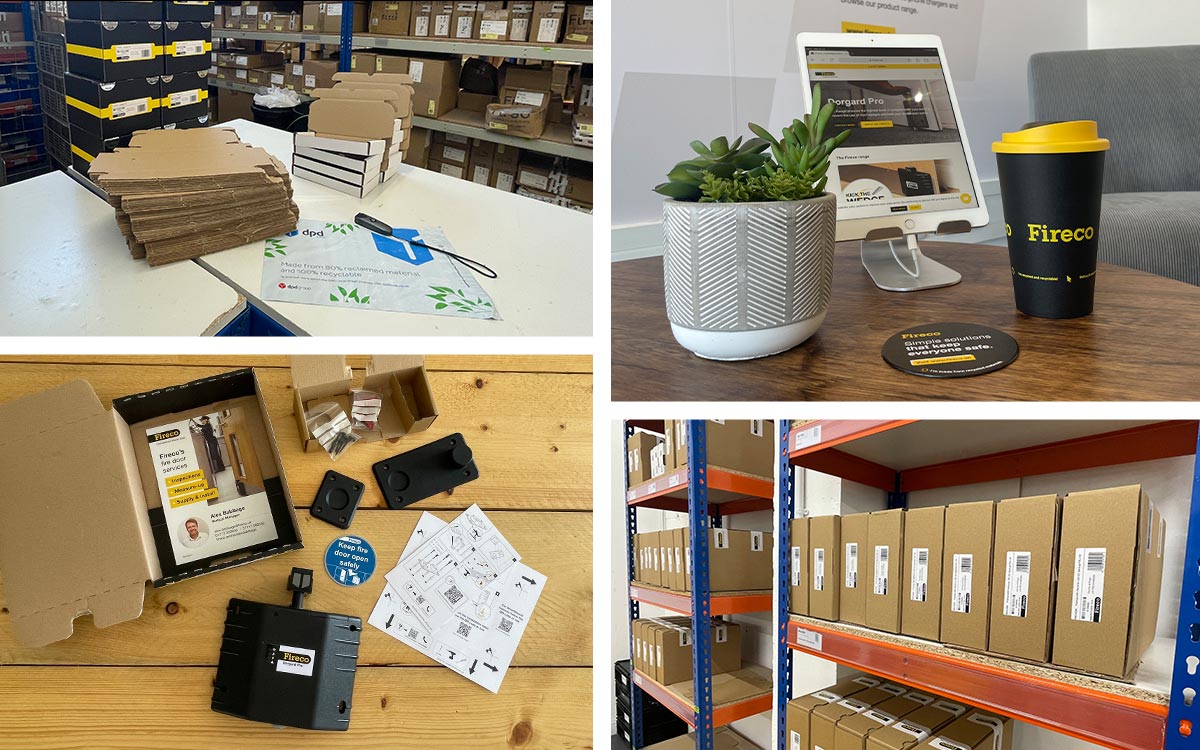

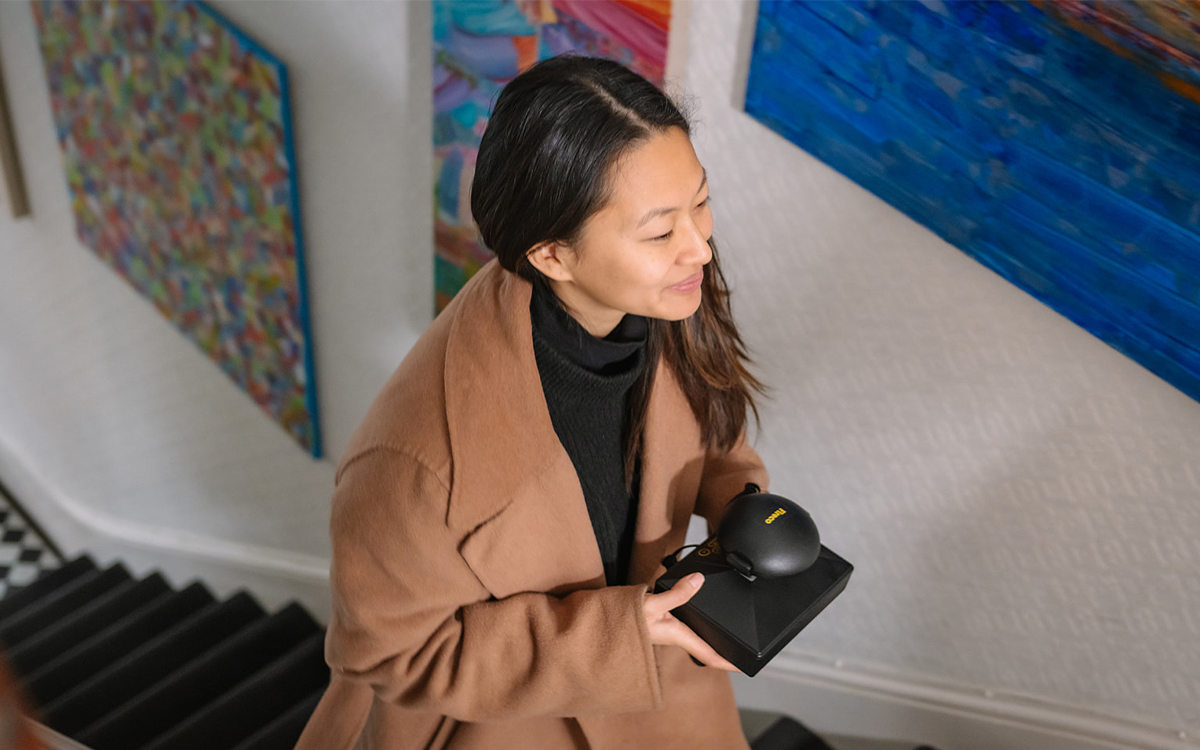

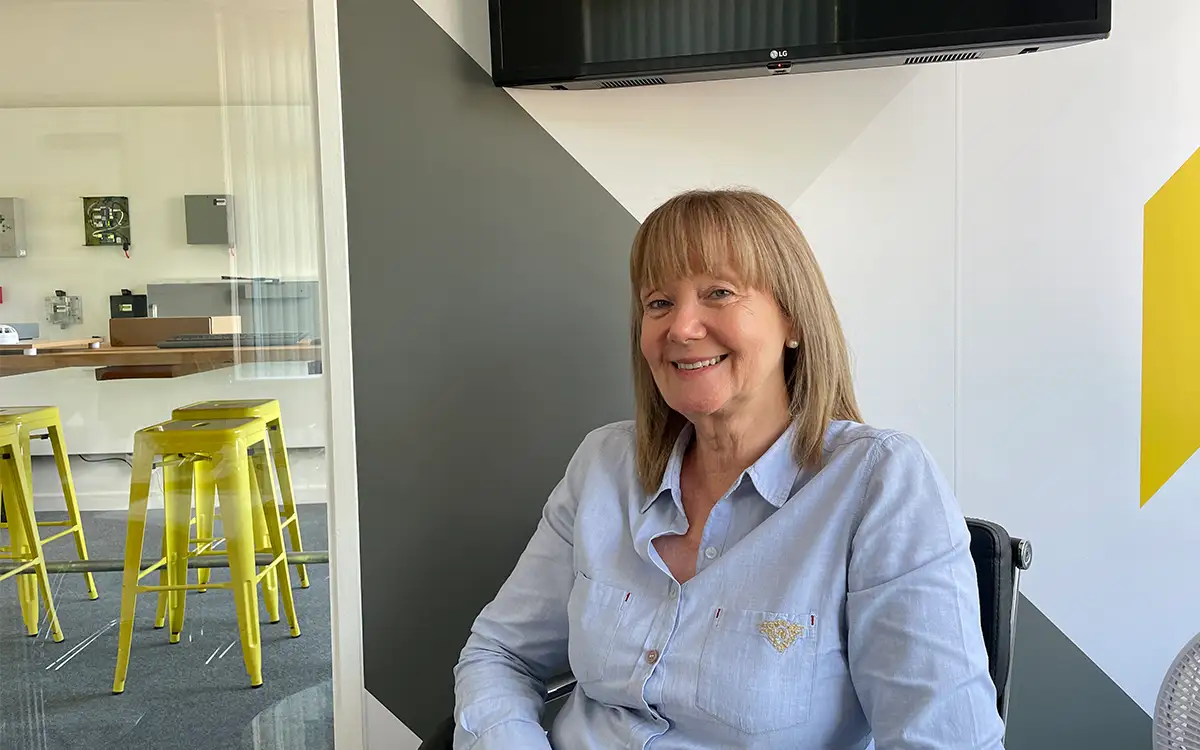
0 Comments